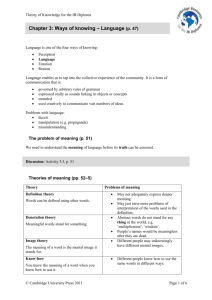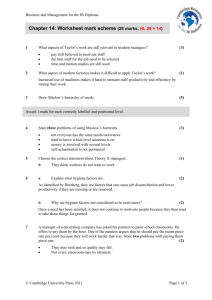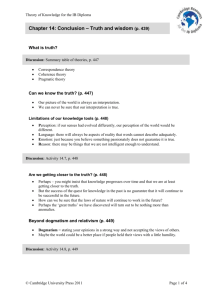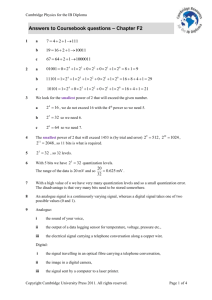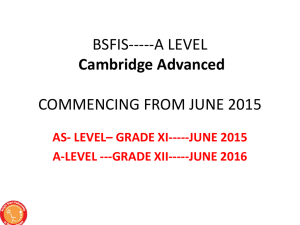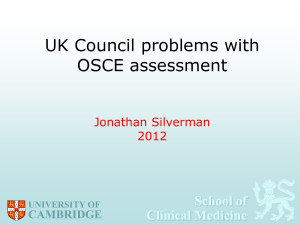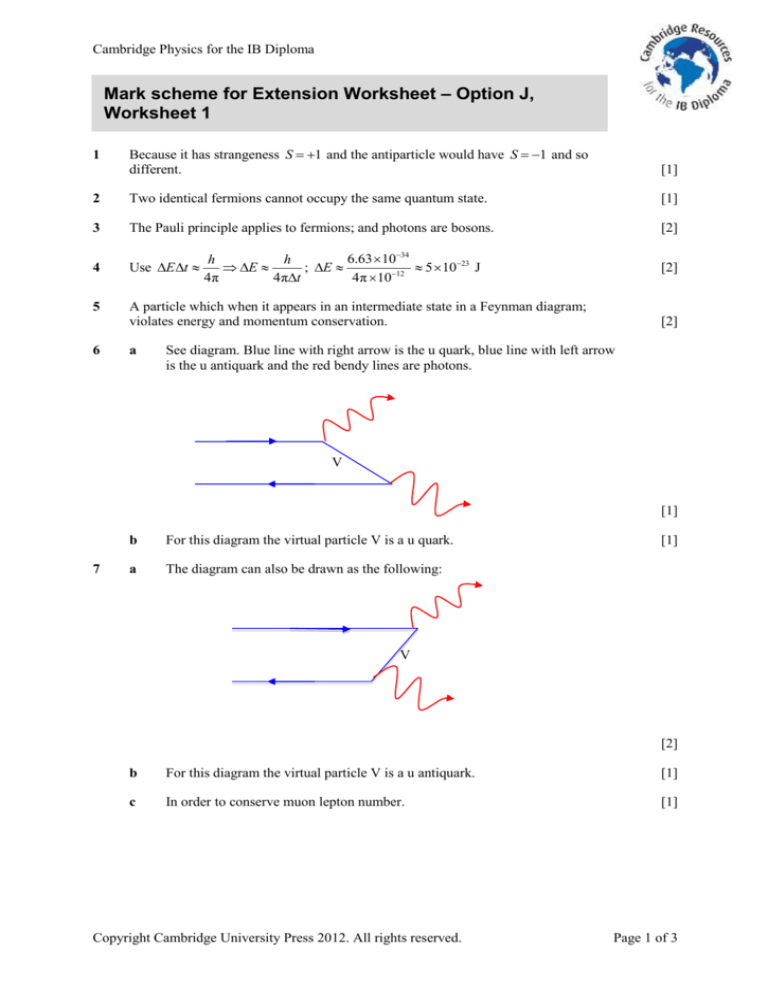
Cambridge Physics for the IB Diploma
Mark scheme for Extension Worksheet – Option J,
Worksheet 1
Because it has strangeness S 1 and the antiparticle would have S 1 and so
different.
[1]
2
Two identical fermions cannot occupy the same quantum state.
[1]
3
The Pauli principle applies to fermions; and photons are bosons.
[2]
4
Use E t
5
A particle which when it appears in an intermediate state in a Feynman diagram;
violates energy and momentum conservation.
1
6
a
6.63 1034
h
h
; E
5 1023 J
E
4π 1012
4π
4πt
[2]
[2]
See diagram. Blue line with right arrow is the u quark, blue line with left arrow
is the u antiquark and the red bendy lines are photons.
V
[1]
7
b
For this diagram the virtual particle V is a u quark.
a
The diagram can also be drawn as the following:
[1]
V
[2]
b
For this diagram the virtual particle V is a u antiquark.
[1]
c
In order to conserve muon lepton number.
[1]
Copyright Cambridge University Press 2012. All rights reserved.
Page 1 of 3
Cambridge Physics for the IB Diploma
8
a
[1]
b
positron
positron
[1]
c
[1]
d
9
Because there are 4 vertices in the Feynman diagram/each vertex contributes a
factor of the electromagnetic interaction strength and this is less than one so
many vertices result in less likely outcomes.
Use the range formula R
[1]
h
h
; to get
m
4πmc
4πRc
6.63 1034
1.76 1025 kg ; hence
4π 1018 3 108
1.76 10 25 c 2
m
eVc2 9.89 1010 eVc2 98.9 GeVc2 100 GeVc2
1.6 10 19
m
Copyright Cambridge University Press 2012. All rights reserved.
[3]
Page 2 of 3
Cambridge Physics for the IB Diploma
10
a
b
The reaction violates strangeness conservation; and only the weak interaction
can violate strangeness conservation.
[2]
No; because family lepton number must be conserved, it can be a muon
neutrino only.
[2]
11
Quarks; and gluons.
[2]
12
The three u quarks are identical in every way, including the spin that has to be up; and
this would violate the Pauli principle unless the three quarks could be differentiated in
some way, for example with a new quantum number called colour.
[2]
Confinement means that colour cannot be observed hence free quarks cannot be
observed.
[1]
13
Copyright Cambridge University Press 2012. All rights reserved.
Page 3 of 3

